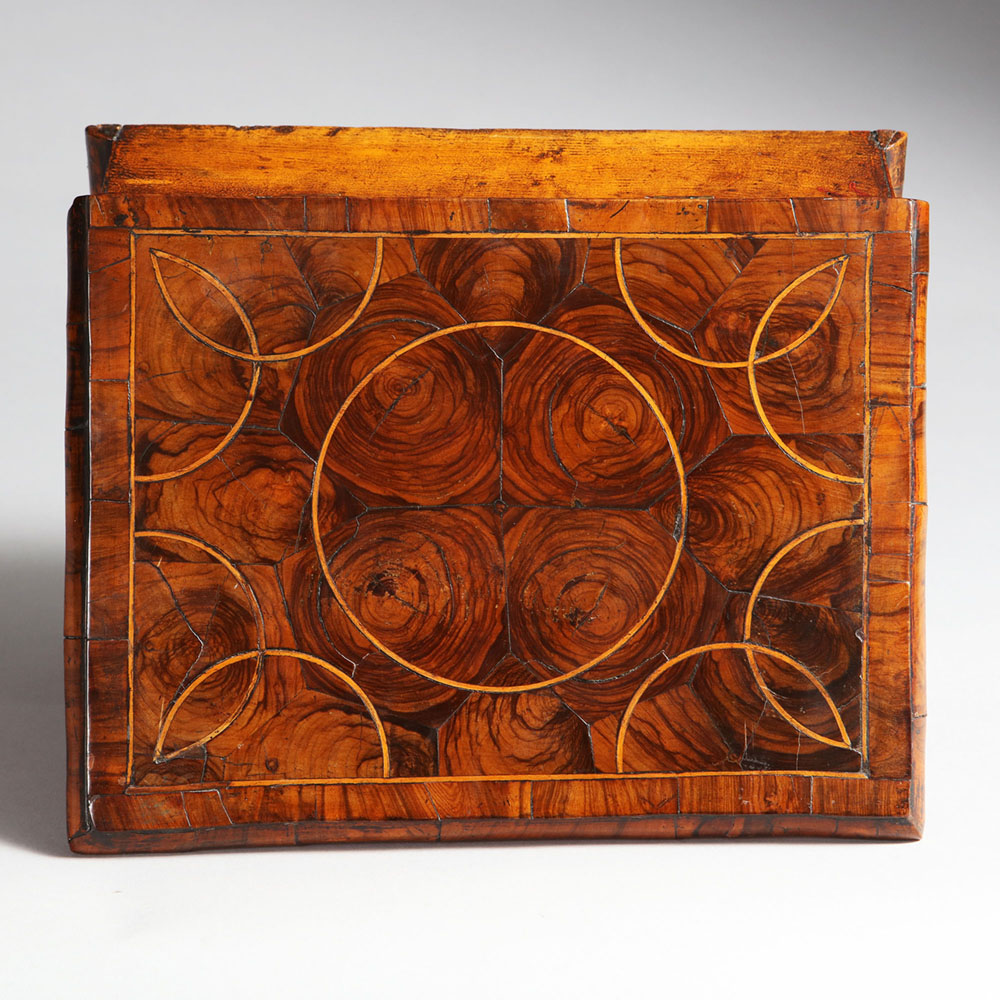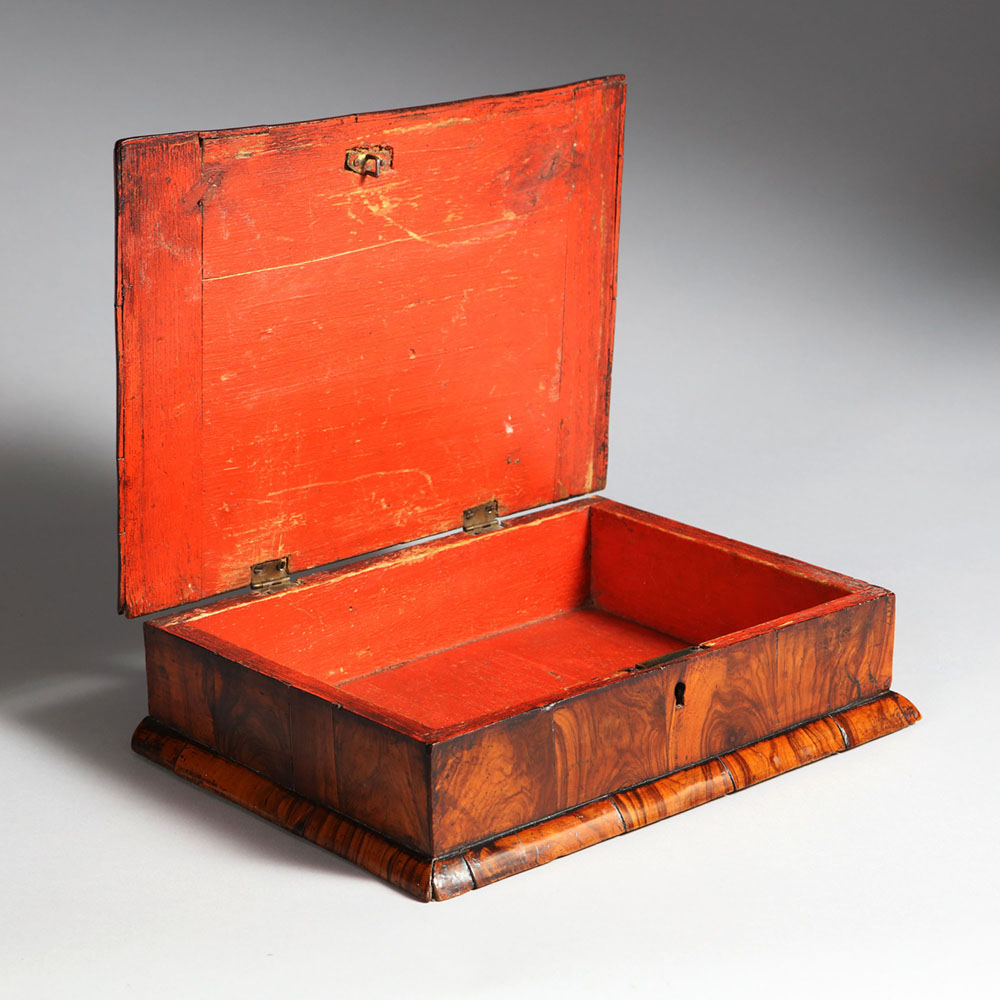17th Century Olive Oyster Lace Box
1689 to 1702 England
SOLD
Request Information
17th Century Olive Oyster Lace Box
Charming and original 12” olive oyster lace box, circa 1680-90.
It is most likely that this gorgeous piece was commissioned during the short reign of William and Mary (1689-1702). This was a great time in British furniture design with some of the most notable pieces to date being commissioned. However, all the credit cannot simply go to the indigenous as a large influx of skilled craftsman flooded in from the continent such as, Daniel Marrot (1661-1752) a French Protestant architect,
The curiously named ‘lace box’ or ‘bible box’ veneered in oyster cut hardwoods such as olive and Kingwood were popular amongst the middle and higher classes of society from C.1660-1700.
Condition
Superb original condition.
Provenance
Literature
Dimensions
PREVIOUSLY SOLD

George III Mahogany Pembroke Table
Fabulous George III mahogany Pembroke table, retaining its original gilt swan-neck handle, skeleton escutcheon and rich wax patinated finish.

Fine 17th Century Barley or Solomonic Twist Baroque Walnut Stool with Tapestry
Fine 17th Century Barley or Solomonic Twist Baroque Walnut Stool with Tapestry SoldFollow UsFine 17th Century Barley or Solomonic Twist Baroque Walnut Stool with Tapestry Dating from the last quarter of the 17th century and with a period...

Large George III 18th Century Mahogany Wine Cooler Cellarette or Jardinière
Large George III 18th Century Mahogany Wine Cooler Cellarette or Jardinière SoldFollow UsLarge George III 18th Century Mahogany Wine Cooler Cellarette or Jardinière A fine and large mid-18th century George III oval mahogany cellarette or wine...
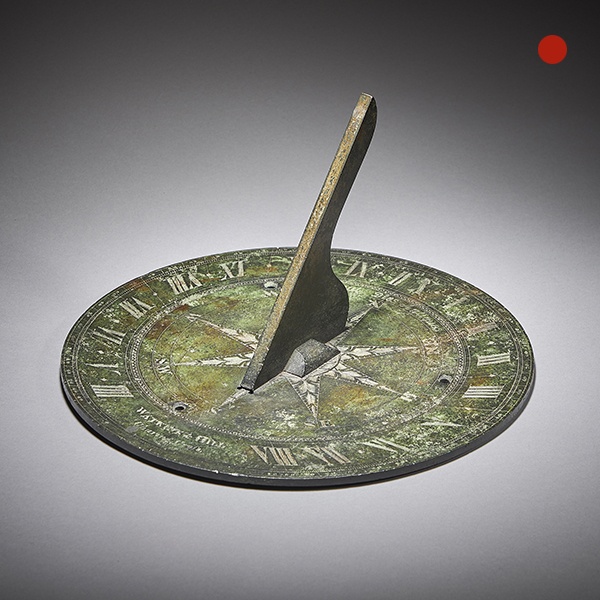
Rare 19th Century Bronze Horizontal Sundial by Watkins & Hill London
Rare 19th Century Bronze Horizontal Sundial by Watkins & Hill London £2,600 Follow UsRare 19th Century Bronze Horizontal Sundial by Watkins & Hill London A beautifully weathered circular bronze sundial by Watkins & Hill, first...

Early 19th Century Grand Tour Framed Pulvinated Micro Mosaic of the Colosseum
Early 19th Century Grand Tour Framed Pulvinated Micro Mosaic of the Colosseum SoldFollow UsEarly 19th Century Grand Tour Framed Pulvinated Micro Mosaic of the Colosseum A fine and rare early 19th century framed grand tour pulvinated micro...
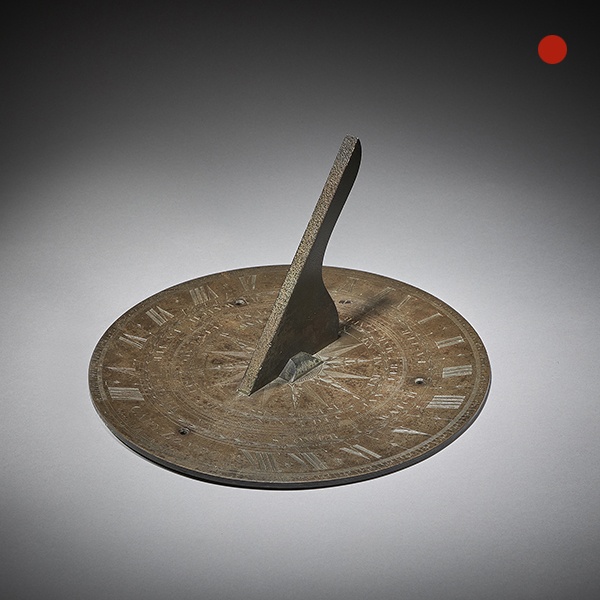
Early 19th Century English Bronze Horizontal Sundial by Cary of London
Early 19th Century English Bronze Horizontal Sundial by Cary of London £2,450 Follow UsEarly 19th Century English Bronze Horizontal Sundial by Cary of London An early 19th-century horizontal sundial by Cary London. This 12” diameter bronze...

George III Mahogany Pembroke Table
Fabulous George III mahogany Pembroke table, retaining its original gilt swan-neck handle, skeleton escutcheon and rich wax patinated finish.

Fine 17th Century Barley or Solomonic Twist Baroque Walnut Stool with Tapestry
Fine 17th Century Barley or Solomonic Twist Baroque Walnut Stool with Tapestry SoldFollow UsFine 17th Century Barley or Solomonic Twist Baroque Walnut Stool with Tapestry Dating from the last quarter of the 17th century and with a period...

Large George III 18th Century Mahogany Wine Cooler Cellarette or Jardinière
Large George III 18th Century Mahogany Wine Cooler Cellarette or Jardinière SoldFollow UsLarge George III 18th Century Mahogany Wine Cooler Cellarette or Jardinière A fine and large mid-18th century George III oval mahogany cellarette or wine...

Rare 19th Century Bronze Horizontal Sundial by Watkins & Hill London
Rare 19th Century Bronze Horizontal Sundial by Watkins & Hill London £2,600 Follow UsRare 19th Century Bronze Horizontal Sundial by Watkins & Hill London A beautifully weathered circular bronze sundial by Watkins & Hill, first...

Early 19th Century Grand Tour Framed Pulvinated Micro Mosaic of the Colosseum
Early 19th Century Grand Tour Framed Pulvinated Micro Mosaic of the Colosseum SoldFollow UsEarly 19th Century Grand Tour Framed Pulvinated Micro Mosaic of the Colosseum A fine and rare early 19th century framed grand tour pulvinated micro...

Early 19th Century English Bronze Horizontal Sundial by Cary of London
Early 19th Century English Bronze Horizontal Sundial by Cary of London £2,450 Follow UsEarly 19th Century English Bronze Horizontal Sundial by Cary of London An early 19th-century horizontal sundial by Cary London. This 12” diameter bronze...
YOU MAY ALSO LIKE
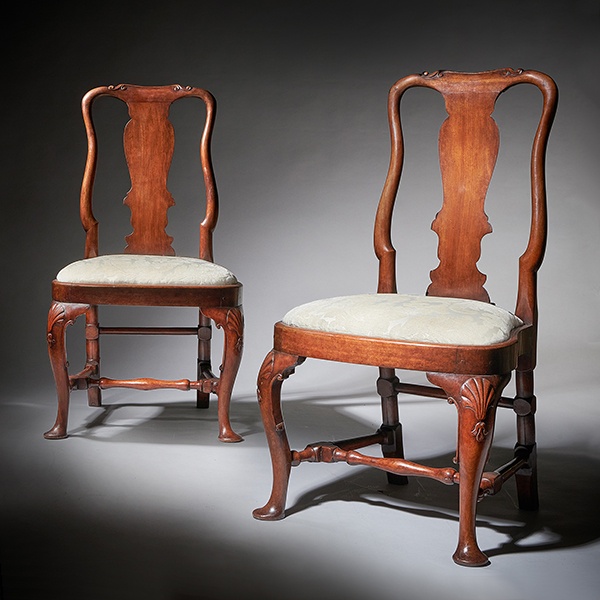
Pair of George I 18th Century Carved Mahogany Chairs, Circa 1720
Pair of George I 18th Century Carved Mahogany Chairs, Circa 1720 £4,400Follow UsPair of George I 18th Century Carved Mahogany Chairs, Circa 1720 A superb pair of early 18th-century carved George I mahogany chairs, circa 1720. Each chair is of...
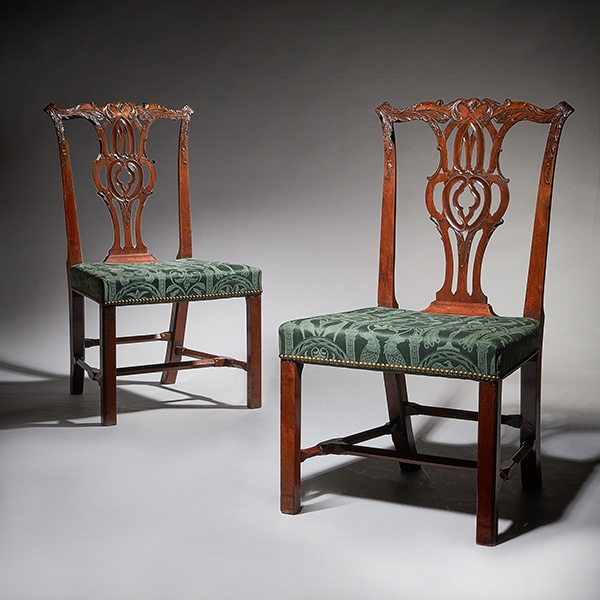
Pair of 18th Century George III Carved Mahogany Chippendale Chairs
Pair of 18th Century George III Carved Mahogany Chippendale Chairs £8,900Follow UsPair of 18th Century George III Carved Mahogany Chippendale Chairs A simply superb pair of carved George III mahogany chairs, C.1770. Condition Good. Wear...
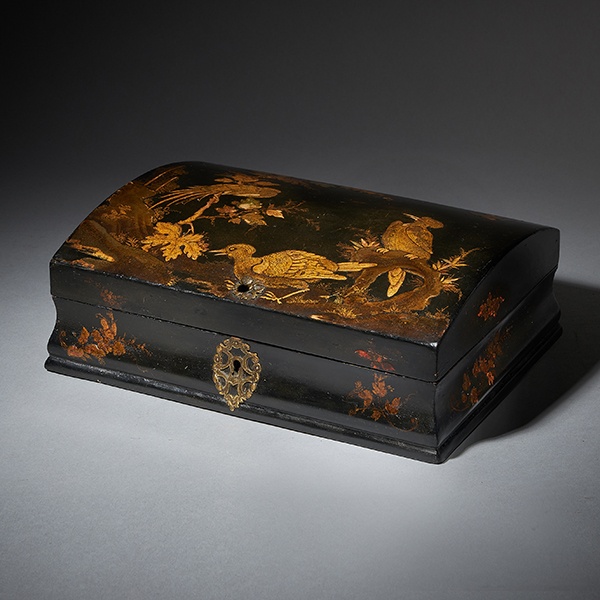
18th Century Japanned Chinoiserie Dome-Topped Box, Circa 1715-1725
18th Century Japanned Chinoiserie Dome-Topped Box, Circa 1715-1725 £3,800Follow Us18th Century Japanned Chinoiserie Dome-Topped Box, Circa 1715-1725 Early 18th century George I Japanned Chinoiserie dome-topped box, Circa 1715-1725. England or...
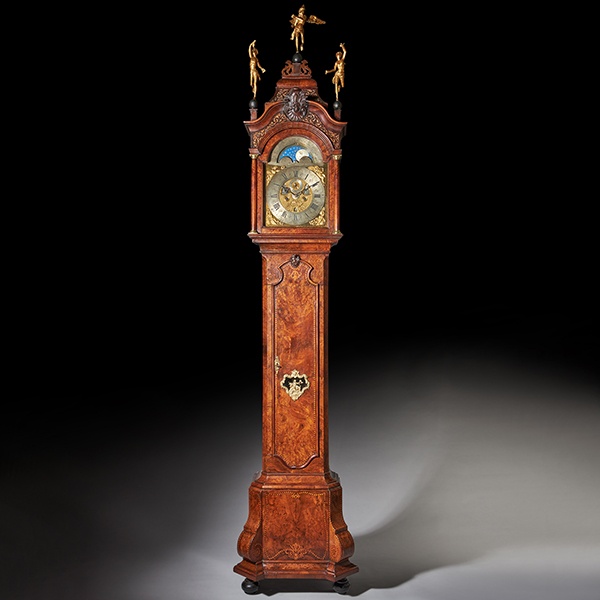
Magnificent 18th Century Striking Dutch Amsterdam Burl Walnut Longcase Clock
Magnificent 18th Century Striking Dutch Amsterdam Burl Walnut Longcase Clock £26,000Follow UsMagnificent 18th Century Striking Dutch Amsterdam Burl Walnut Longcase Clock An impressive Dutch longcase clock with a burr walnut veneered oak case,...

18th Century George III Mahogany Wine Cooler or Cellarette
18th Century George III Mahogany Wine Cooler or Cellarette £4,600Follow Us18th Century George III Mahogany Wine Cooler or Cellarette A fine and well-figured George III mahogany hexagonal wine cooler or cellarette on the original stand, C....

Striking 19th Century Carriage Clock with a Gilt-Brass Corniche Case by Grohé
Striking 19th Century Carriage Clock with a Gilt-Brass Corniche Case by Grohé £3,995 Follow UsStriking 19th Century Carriage Clock with a Gilt-Brass Corniche Case by Grohé Striking carriage clock with a gilt-brass corniche case by Grohé,...

Pair of George I 18th Century Carved Mahogany Chairs, Circa 1720
Pair of George I 18th Century Carved Mahogany Chairs, Circa 1720 £4,400Follow UsPair of George I 18th Century Carved Mahogany Chairs, Circa 1720 A superb pair of early 18th-century carved George I mahogany chairs, circa 1720. Each chair is of...

Pair of 18th Century George III Carved Mahogany Chippendale Chairs
Pair of 18th Century George III Carved Mahogany Chippendale Chairs £8,900Follow UsPair of 18th Century George III Carved Mahogany Chippendale Chairs A simply superb pair of carved George III mahogany chairs, C.1770. Condition Good. Wear...

18th Century Japanned Chinoiserie Dome-Topped Box, Circa 1715-1725
18th Century Japanned Chinoiserie Dome-Topped Box, Circa 1715-1725 £3,800Follow Us18th Century Japanned Chinoiserie Dome-Topped Box, Circa 1715-1725 Early 18th century George I Japanned Chinoiserie dome-topped box, Circa 1715-1725. England or...

Magnificent 18th Century Striking Dutch Amsterdam Burl Walnut Longcase Clock
Magnificent 18th Century Striking Dutch Amsterdam Burl Walnut Longcase Clock £26,000Follow UsMagnificent 18th Century Striking Dutch Amsterdam Burl Walnut Longcase Clock An impressive Dutch longcase clock with a burr walnut veneered oak case,...

18th Century George III Mahogany Wine Cooler or Cellarette
18th Century George III Mahogany Wine Cooler or Cellarette £4,600Follow Us18th Century George III Mahogany Wine Cooler or Cellarette A fine and well-figured George III mahogany hexagonal wine cooler or cellarette on the original stand, C....

Striking 19th Century Carriage Clock with a Gilt-Brass Corniche Case by Grohé
Striking 19th Century Carriage Clock with a Gilt-Brass Corniche Case by Grohé £3,995 Follow UsStriking 19th Century Carriage Clock with a Gilt-Brass Corniche Case by Grohé Striking carriage clock with a gilt-brass corniche case by Grohé,...




